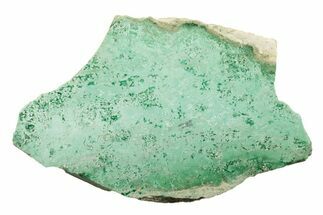This Specimen has been sold.
4.7" Gomphotherium Molar From Florida
This
is a partial molar of Gomphotherium, a relative of the Mastodon. It was collected from Florida by a diver looking for Megalodon teeth. Even partial molars of Gomphotherium are fairly rare finds.
Trilophodon (Gomphotherium) is an extinct genus of proboscid which evolved in the Early Miocene and lived 13-3 million years ago. The genus evolved in North America and immigrated to Asia, Europe and Africa after a drop in sea level allowed them to cross over. It survived into the Pliocene, and its remains have been found in Chile, France, Germany, Austria, Kansas, Tennessee, Pakistan, Kenya and Bosnia and Herzegovina.
Full grown it stood about 3 meters high with an estimated weight of 4-5 tons, and bore a strong resemblance to a modern elephant. However, it had four tusks; two on the upper jaw and two on the elongated lower jaw. The lower tusks are parallel and shaped like a shovel and were probably used for digging up food from mud. Unlike modern elephants, the upper tusks were covered by a layer of enamel. Compared to elephants, the skull was more elongated and low, indicating that the animal had a short trunk, rather like a tapir's.
These animals probably lived in swamps or near lakes, using their tusks to dig or scrape up aquatic vegetation. In comparison to earlier proboscids, Gomphotherium had far fewer molars; the remaining ones had high ridges to expand their grinding surface. Gomphotherium inhabited dry wooded regions near lakes
Trilophodon (Gomphotherium) is an extinct genus of proboscid which evolved in the Early Miocene and lived 13-3 million years ago. The genus evolved in North America and immigrated to Asia, Europe and Africa after a drop in sea level allowed them to cross over. It survived into the Pliocene, and its remains have been found in Chile, France, Germany, Austria, Kansas, Tennessee, Pakistan, Kenya and Bosnia and Herzegovina.
Full grown it stood about 3 meters high with an estimated weight of 4-5 tons, and bore a strong resemblance to a modern elephant. However, it had four tusks; two on the upper jaw and two on the elongated lower jaw. The lower tusks are parallel and shaped like a shovel and were probably used for digging up food from mud. Unlike modern elephants, the upper tusks were covered by a layer of enamel. Compared to elephants, the skull was more elongated and low, indicating that the animal had a short trunk, rather like a tapir's.
These animals probably lived in swamps or near lakes, using their tusks to dig or scrape up aquatic vegetation. In comparison to earlier proboscids, Gomphotherium had far fewer molars; the remaining ones had high ridges to expand their grinding surface. Gomphotherium inhabited dry wooded regions near lakes
SPECIES
Cuvieronius tropicus
AGE
LOCATION
Florida
SIZE
4.7" long
CATEGORY
ITEM
#10838
We guarantee the authenticity of all of our specimens.
 Reviews
Reviews














